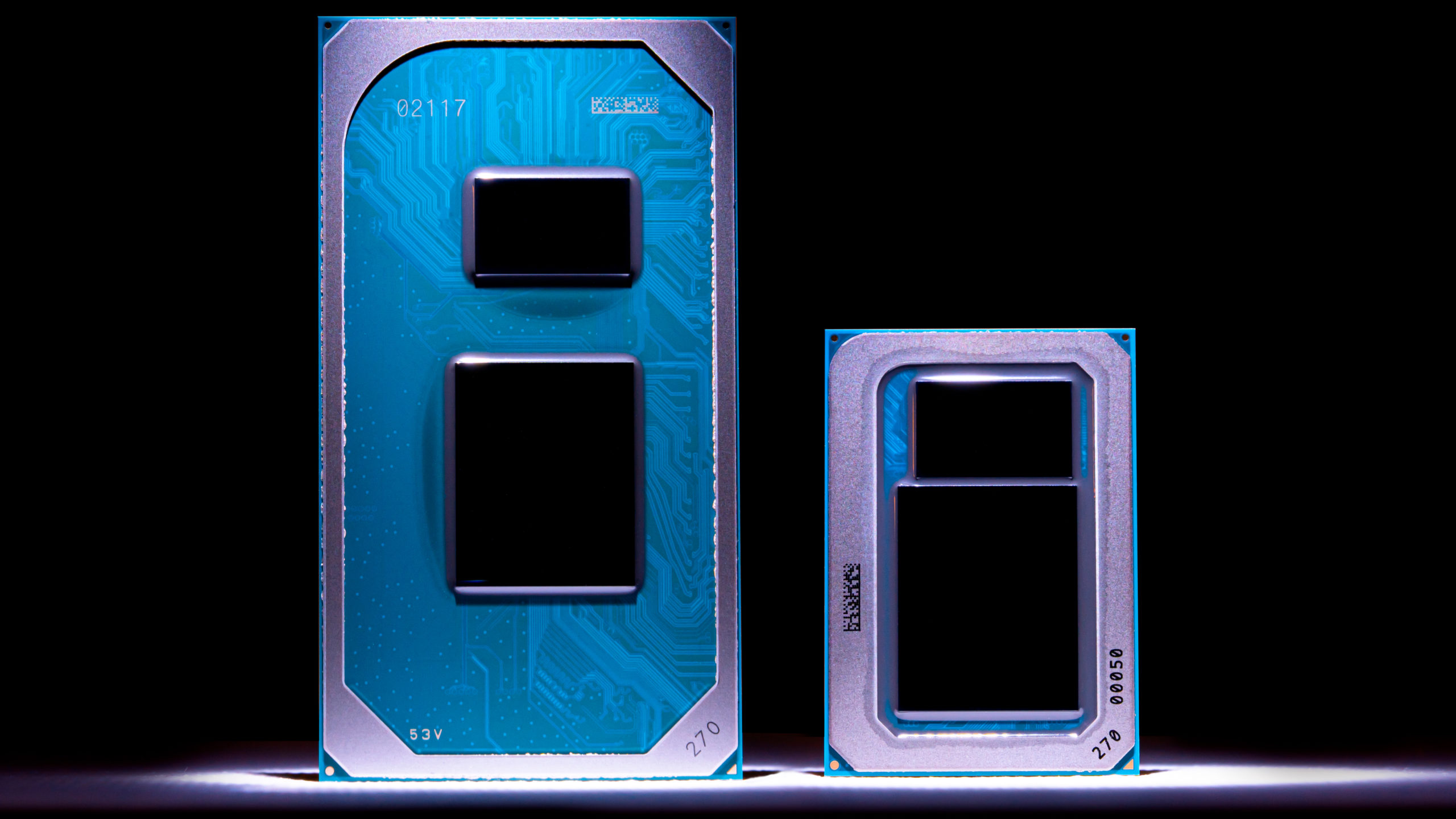Intel has released internal performance benchmarks that suggest that laptops with its 11th Gen “Tiger Lake” mobile processors deliver far superior performance on battery than those using AMD’s Ryzen 4000-series CPUs.
Five Intel and five AMD systems were tested with “out of the box” settings, with the default battery slider set to “better performance.” The big changes made were that antivirus software was removed and that the screen brightness was set to 200 nits on each device.
Notably, only two of Intel’s systems are Evo-certified – the MSI Prestige 14 and Lenovo Yoga 9i.
Intel’s own tests admit that the AMD systems have slightly higher battery life on the MobileMark 18 battery life test, but found that the score on that benchmark – and others, was superior on its own chips on battery. Be aware, of course, that Intel ran these benchmarks, and we take all vendor-provided benchmarks with a grain of salt, as test configurations and benchmarks often are selected to highlight best or worst-case scenarios.
In PCMark 10 using Office 365 applications, Intel said AMD laptops “see up to 38% reduction in performance” on battery power. In WebXPRT, a test that has become an Intel favorite recently, AMD’s systems dropped to a 48% reduction in performance. On SYSmark 25, that went to a 30% drop.
Intel chief performance strategist Ryan Shrout said that the AMD numbers “pancaked” when unplugged, effectively removing the differences between a Ryzen 7, Ryzen 5, and Ryzen 3 while on battery power.
Image 1 of 3
Image 2 of 3
Image 3 of 3
Intel also showed off results in its Realistic Usage Guide (RUG) tests, where the reductions were noticeable, but a bit less dramatic.
Image 1 of 4
Image 2 of 4
Image 3 of 4
Image 4 of 4
Intel pointed out in its testing that Cinebench doesn’t replicate the other synthetic benchmarks or its RUGs. In that case, the systems matched up much more closely on both AC and DC power. Intel has been on a bit of a campaign against using tests like Cinebench as AMD’s chips have matured, with attempts to measure “real world performance” instead. (Cinebench testing took place on R20, as the more recent R23 was not yet available,)
In the case of Cinebench, it showed its Tiger Lake chips winning on single-threaded performance, with AMD’s Renoir processors beating it in multi-threaded performance.
The reasoning, Intel suggests, is due to power and voltage. In an in-house “microbenchmark,” the results showed AMD’s Ryzen 7 4900HS and Ryzen 7 4700U delaying burst and responsiveness by up to 10 seconds. Notably, Intel didn’t include its own chips in these tests. Intel used WebXPRT to show the systems limiting burst performance.
Image 1 of 2
Image 2 of 2
Intel first started touting performance on DC power when Tiger Lake first launched earlier this year. We did a bit of testing in this regard when we first tested the chip in a whitebox system, where a Ryzen 7 4800U lost out to Tiger Lake in Geekbench 5.2 while unplugged, but held its own in a Handbrake transcode.
Intel hasn’t yet publicly compared performance, unplugged or otherwise, to its other recent competition, Apple’s M1 in the MacBook Air, 13-inch MacBook Pro and Mac Mini.
The company is now pushing DC battery life as part of a real-world experience for people who use laptops, who often take them from room to room. It’s using these results to push its Evo platform branding and push a purportedly positive aspect of its latest technology that’s now facing more competition than ever.
